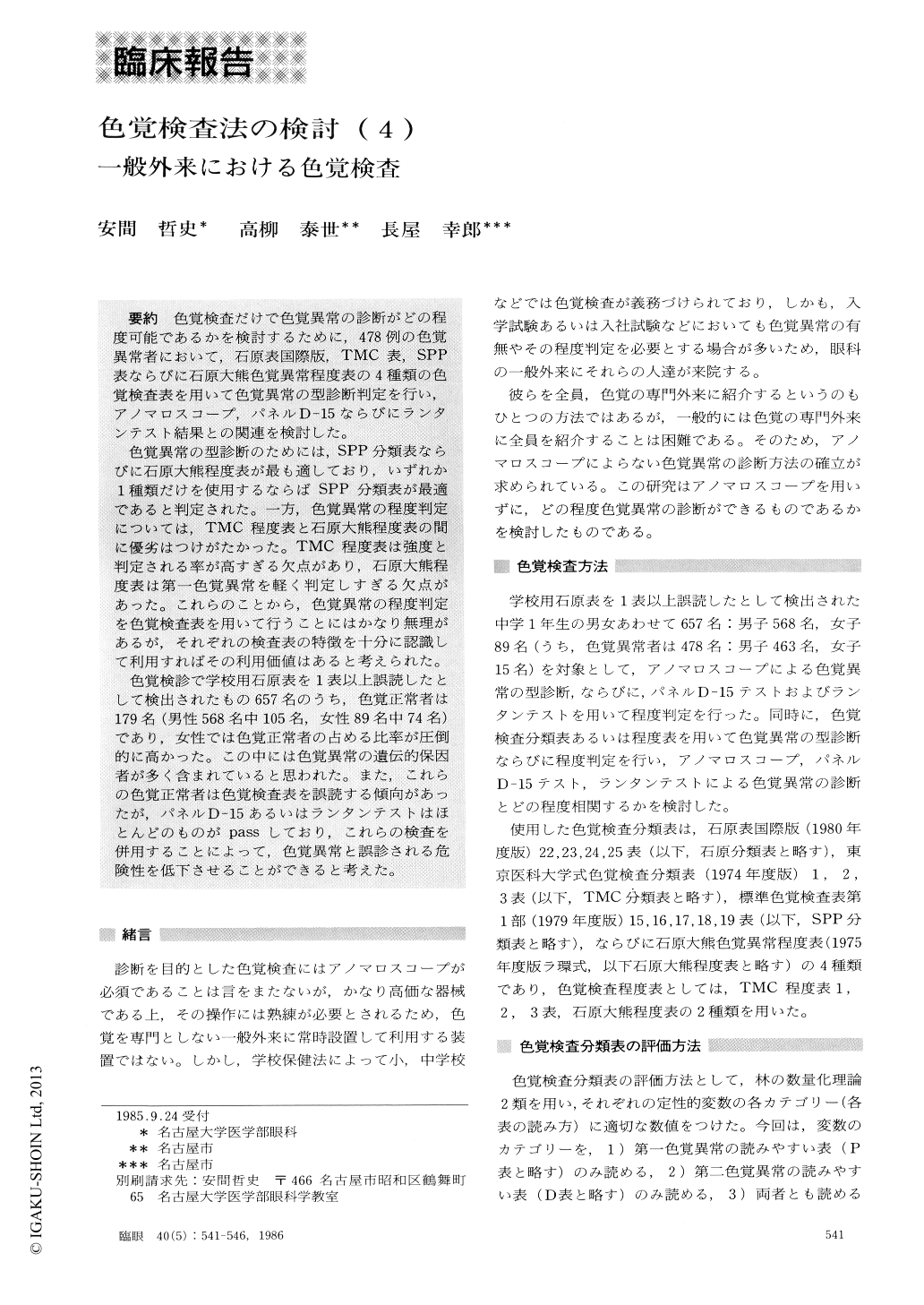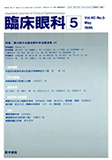Japanese
English
- 有料閲覧
- Abstract 文献概要
- 1ページ目 Look Inside
色覚検査だけで色覚異常の診断がどの程度可能であるかを検討するために,478例の色覚異常者において,石原表国際版,TMC表,SPP表ならびに石原大熊色覚異常程度表の4種類の色覚検査表を用いて色覚異常の型診断判定を行い,アノマロスコープ,パネルD−15ならびにランタンテスト結果との関連を検討した.
色覚異常の型診断のためには,SPP分類表ならびに石原大熊程度表が最も適しており,いずれか1種類だけを使用するならばSPP分類表が最適であると判定された.一方,色覚異常の程度判定については,TMC程度表と石原大熊程度表の間に優劣はつけがたかった.TMC程度表は強度と判定される率が高すぎる欠点があり,石原大熊程度表は第一色覚異常を軽く判定しすぎる欠点があった.これらのことから,色覚異常の程度判定を色覚検査表を用いて行うことにはかなり無理があるが,それぞれの検査表の特徴を十分に認識して利用すればその利用価値はあると考えられた.
色覚検診で学校用石原表を1表以上誤読したとして検出されたもの657名のうち,色覚正常者は179名(男性568名中105名,女性89名中74名)であり,女性では色覚正常者の占める比率が圧倒的に高かった.この中には色覚異常の遺伝的保因者が多く含まれていると思われた。また,これらの色覚正常者は色覚検査表を誤読する傾向があったが,パネルD-15あるいはランタンテストはほとんどのものがpassしており,これらの検査を併用することによって,色覚異常と誤診される危険性を低下させることができると考えた。
We evaluated a series of 478 color-defective subjects with the use of Ishihara Plates, Tokyo Medical College Plates (TMC), Standard Pseudoisochromatic Plates (SPP) and Ishihara-Ohkuma plates. We also used the anomaloscope, Panel D-15 and Ichikawa's Lantern to determine the type and grade of the defective color vision.
As an overall evaluation, the SPP plates gave the best results as to the typing determined by the anomalo-scope. The Ishihara-Ohkuma plates gave the second best results.
Regarding the grade diagnosis, TMC plates resulted in diagnosing numerous color-defective subjects in the strong range. Ishihara-Ohkuma plates assigned protans to the weaker category than deutans.
Among a larger series of 657 subjects who were diagnosed as color-defective by Ishihara-School Plates, 179 were consequently judged as normal by examina-tion with the anomaloscope. These false positive.cases consisted _of 105 out of 568 males and 74 out of 89 females: It appeared that a lot of genetic carriers of color vision deficiency were included among these apparently color normals, as the rate of females in the latter group was overwhelming.
These color normals tend to misread the pseudoiso-chromatic plates, but usually pass the Panel D-15 test and the Lantern test. It would be useful, therefore, to use these tests together with the pseudoisochromatic plates in order to avoid false positive diagnosis in such subjects.
Rinsho Ganka (Jpn J Clin Ophthalmol) 40(5) : 541-546. 198

Copyright © 1986, Igaku-Shoin Ltd. All rights reserved.


